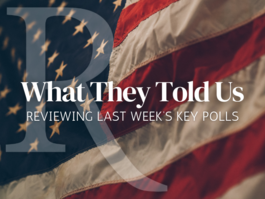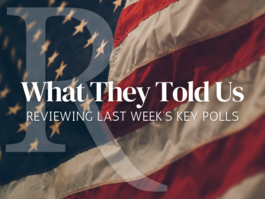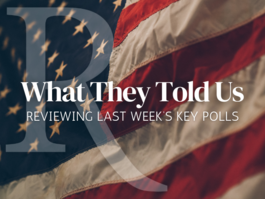Comparing the two Most Republican Houses in 70 Years
A Commentary by Michael Barone
Before Christmas, Arizona finished its 2nd Congressional District recount, showing Republican Martha McSally beating incumbent Democrat Ron Barber by 167 votes. This means there will be 247 Republicans in the House in the 114th Congress -- one more than was elected to the House in the 80th Congress in 1946. It's the most Republican House since the one elected in 1928, a year when very few of today's voters were alive.
But while the party numbers are almost precisely the same in the Houses elected this year and 68 years ago, the composition of the two parties' caucuses (the Republicans call theirs a conference) is sharply different.
One reason is that the reapportionment of House seats following the seven censuses from 1950 to 2010 has shifted many seats from the Northeast, Midwest and Mississippi Valley to Texas, South Atlantic and Western states.
Altogether, 100 seats have been transferred from 27 states to 17 other states. Only six small states have the same number of seats as they did in 1946. The big losers have been New York (down 18 seats), Pennsylvania (down 15), Illinois (down 8) and Ohio (down 7). The big gainers have been California (up 30), Florida (up 21) and Texas (up 15).
The House Republican Conference that assembled in January 1947 was dominated by members from New York (28), Pennsylvania (28), Illinois (20) and Ohio (19). Most came from courthouse towns and sought to roll back the New Deal. They provided the impetus behind the Taft-Hartley Act, which limited the power of labor unions -- a law that passed despite Harry Truman's veto and is still in effect today.
They had the votes to override because the House Democratic Caucus included many conservatives in 1947. A majority of its members -- 117 of 189 -- came from the South (defined here as the 11 old Confederate states plus West Virginia, Kentucky and Oklahoma).
The largest state delegation was from Texas, including former and future Speaker Sam Rayburn and future President Lyndon Johnson. Only one Northern state, New York, elected more than 10 Democrats. Freshman Rep. John Kennedy's party was outnumbered 9-5 in the Massachusetts delegation.
This 80th House provided crucial bipartisan support for Truman's Cold War policies, including the expensive Marshall Plan. One Michigan Republican who balked was beaten in the next primary by a young lawyer named Gerald Ford.
Bipartisanship was possible on contemporary issues because the party divisions reflected the distant past. The Democratic Party, which 85 years earlier had been skeptical about waging the Civil War, carried Southern seats 117-11. The Republican Party, which had backed the war, carried Northern seats 235-72.
The divisions in the 114th House, in contrast, reflect contemporary divisions. The House Republican Conference is tilted toward the South, but not as heavily as Democrats were in 1947. Of its 247 members, 114 are from Southern states, and its largest state delegations are from Texas (25) and Florida (217). Republicans' margin in Southern seats is 114-38. Most Southern Democrats are from black- or Hispanic-majority districts or those with a Northern cultural flavor (South Florida, Northern Virginia, Austin).
But Democrats lead in Northern seats by only 150-133. Northern Republicans come mainly from suburbs and exurbs, not small towns as in 1947. They tend to represent growing areas rather than those that are losing steam.
The House Democratic Caucus is heavily coastal. The largest state delegation by far is from California, with 39 seats -- one-fifth of the total. This helps to account for Nancy Pelosi's strength in her caucus, though she lost a key committee fight last month. Almost half of the Democratic gain in seats from 1946 to 2014 came in the three West Coast states, with most of the rest along the Atlantic seaboard from Maine to Maryland.
As was apparent on the Cromnibus vote, when 67 Republicans bucked their leadership and 57 Democrats differed from Pelosi, neither conference nor caucus is monolithic. But these differences are more about tactics than goals.
The House Democratic Caucus almost unanimously supports big government policies and cultural liberalism. The more diverse (on ideas and increasingly in race, ethnicity and gender) House Republican Conference favors reining in big government but lacks clear consensus on how to do it.
House Republicans lost their majority in 1948 but made important changes in public policy that were permanent or long lasting. Pelosi tried to do the same in 2009 and 2010. Can House Republicans succeed in reversing or significantly adjusting those policies? Not clear.
Michael Barone, senior political analyst at the Washington Examiner, (www.washingtonexaminer.com), where this article first appeared, is a resident fellow at the American Enterprise Institute, a Fox News Channel contributor and a co-author of The Almanac of American Politics. To find out more about Michael Barone, and read features by other Creators writers and cartoonists, visit the Creators Syndicate Web page at www.creators.com.
COPYRIGHT 2014 THE WASHINGTON EXAMINER
DISTRIBUTED BY CREATORS.COM
See Other Political Commentary.
See Other Commentaries by Michael Barone.
Views expressed in this column are those of the author, not those of Rasmussen Reports.Comments about this content should be directed to the author or syndicate.
Rasmussen Reports is a media company specializing in the collection, publication and distribution of public opinion information.
We conduct public opinion polls on a variety of topics to inform our audience on events in the news and other topics of interest. To ensure editorial control and independence, we pay for the polls ourselves and generate revenue through the sale of subscriptions, sponsorships, and advertising. Nightly polling on politics, business and lifestyle topics provides the content to update the Rasmussen Reports web site many times each day. If it's in the news, it's in our polls. Additionally, the data drives a daily update newsletter and various media outlets across the country.
Some information, including the Rasmussen Reports daily Presidential Tracking Poll and commentaries are available for free to the general public. Subscriptions are available for $4.95 a month or 34.95 a year that provide subscribers with exclusive access to more than 20 stories per week on upcoming elections, consumer confidence, and issues that affect us all. For those who are really into the numbers, Platinum Members can review demographic crosstabs and a full history of our data.
To learn more about our methodology, click here.



